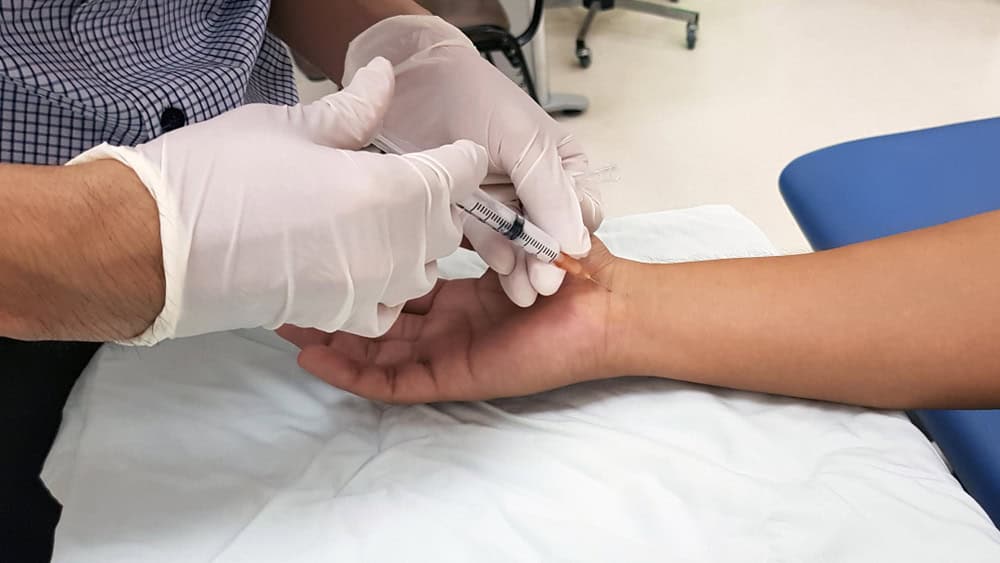Are you living with chronic nerve pain? Our neuropathy doctor in Hollis Hills, NY offers treatments that help reduce pain and improve mobility. Get the relief you deserve with specialized care.

Reviews

At NY Spine Medicine, we specialize in neuropathy treatment for individuals who are suffering from chronic nerve pain and peripheral neuropathy in Queens. Our neuropathy specialists use cutting-edge techniques to diagnose and manage nerve damage, improving the quality of life for our patients.
Advanced tools, like EMG tests and nerve conduction studies, allow us to create treatment plans that address nerve pain, numbness, and weakness. With options like physical therapy, nerve stimulation, and medication, we help patients regain comfort and mobility. Find lasting relief with our Hollis Hills, NY neuropathy doctor today!


Ready to get started?
Nerve pain shouldn’t dictate your daily life. That’s why at NY Spine Medicine, our neuropathy doctor in Hollis Hills, NY focuses on treatments designed to address chronic nerve pain and peripheral neuropathy at the source. We go beyond temporary relief, offering targeted therapies that promote long-term improvement.
From nerve damage treatment to innovative neuropathy therapies, we create custom strategies to restore function and reduce pain. Our goal is to help Queens residents regain strength, mobility, and confidence in their daily routines. Start your journey toward lasting relief-schedule a consultation with our team today.

Queens Village was founded as Little Plains in the 1640s. Homage to this part of Queens Village history is found on the sign above the Long Island Railroad Station there. In 1824, Thomas Brush established a blacksmith shop in the area. He prospered and built several other shops and a factory, and the area soon became known as Brushville. On March 1, 1837, the railroad arrived. The first station in the area was called Flushing Avenue in 1837, Delancy Avenue by June 20, 1837, and Brushville by November 27, 1837, likely about a mile west of the present station. In 1856, residents voted to change the name from Brushville to Queens. The name “Inglewood” also was used for both the village and the train station in the 1860s and 1870s. The name Brushville was still used in an 1860 New York Times article, but both “Queens” and “Brushville” are used in an 1870 article. Maps from 1873 show portions of Queens Village (then called Inglewood and Queens) in the town of Hempstead, but 1891 maps show it entirely in the town of Jamaica.
After the Borough of Queens became incorporated as part of the City of Greater New York in 1898, and the new county of Nassau was created in 1899, the border between the city and Nassau County was set directly east of Queens Village. A 1901 article in the Brooklyn Eagle already uses the full name Queens Village, a name that had been used as late as the 1880s for Lloyd’s Neck in present-day Suffolk County. In 1923, the Long Island Railroad added “Village” to its station’s name to avoid confusion with the county of the same name, and thus the neighborhood became known as Queens Village.
Queens Village was part of an overall housing boom that was spreading east through Queens from New York as people from the city sought the bucolic life afforded by the less-crowded atmosphere of the area. Today, many of those charming and well-maintained Dutch Colonial and Tudor homes built in Queens Village during the 1920s and 1930s continue to attract a diverse population.
Learn more about Hollis Hills.Local Resources
New York:
Florida:
Support